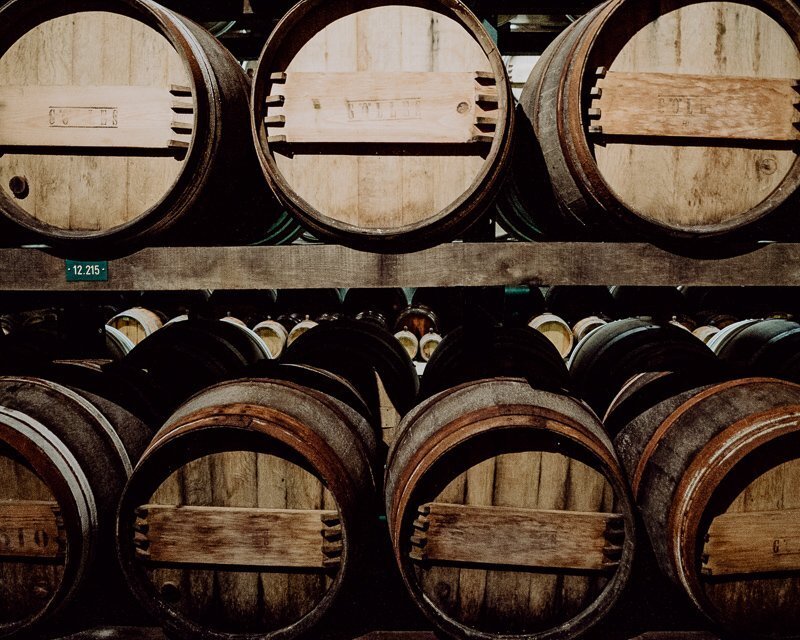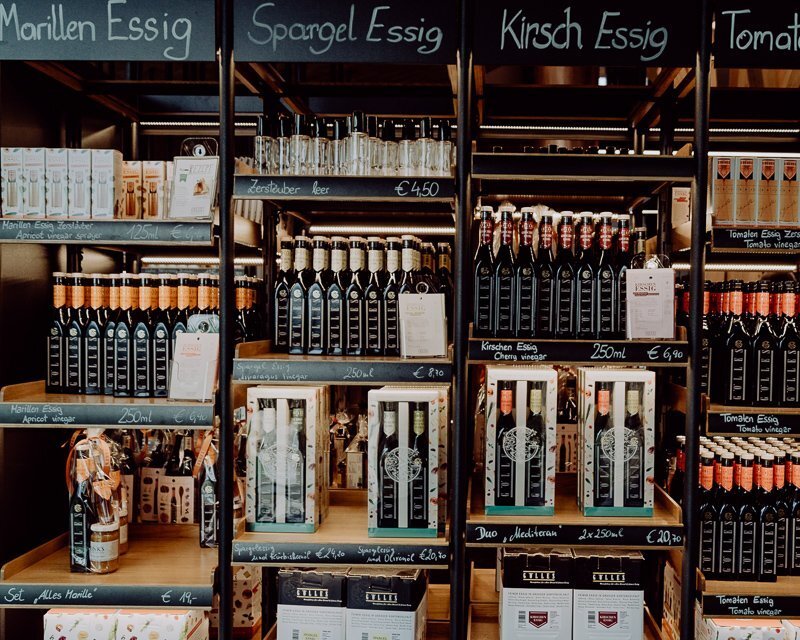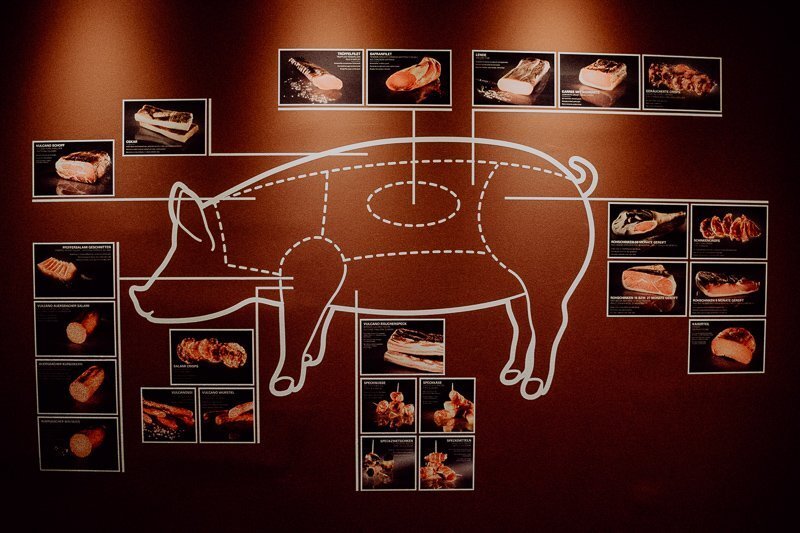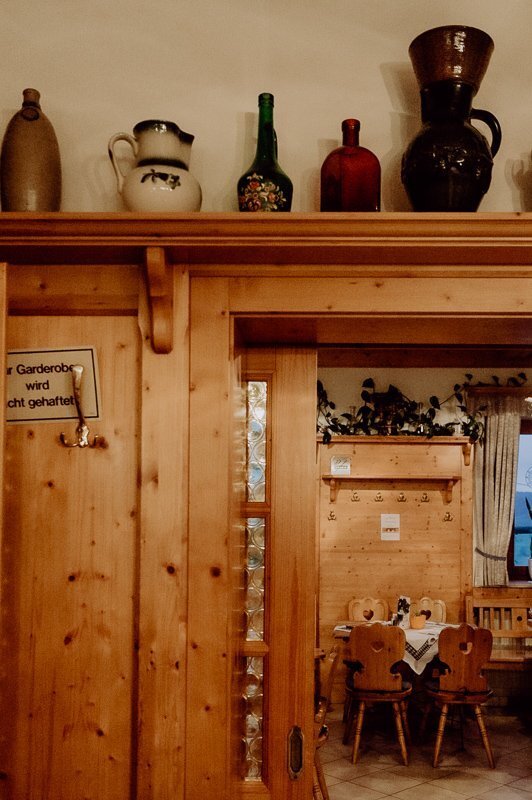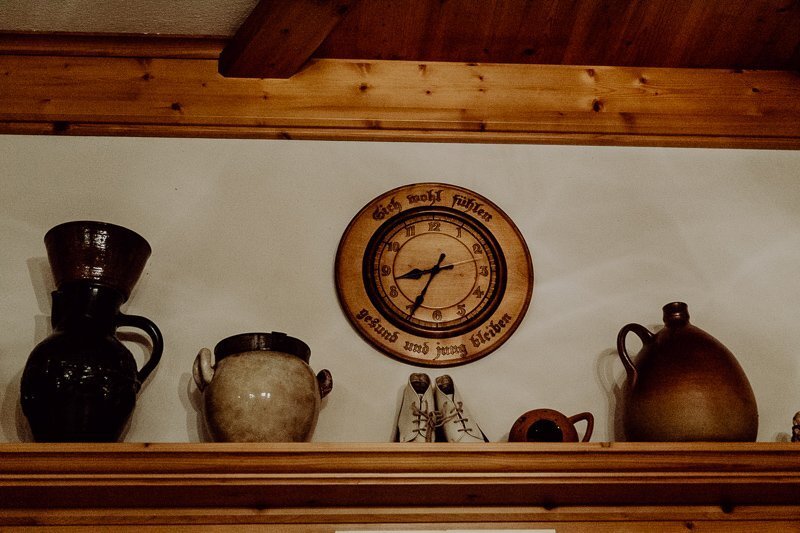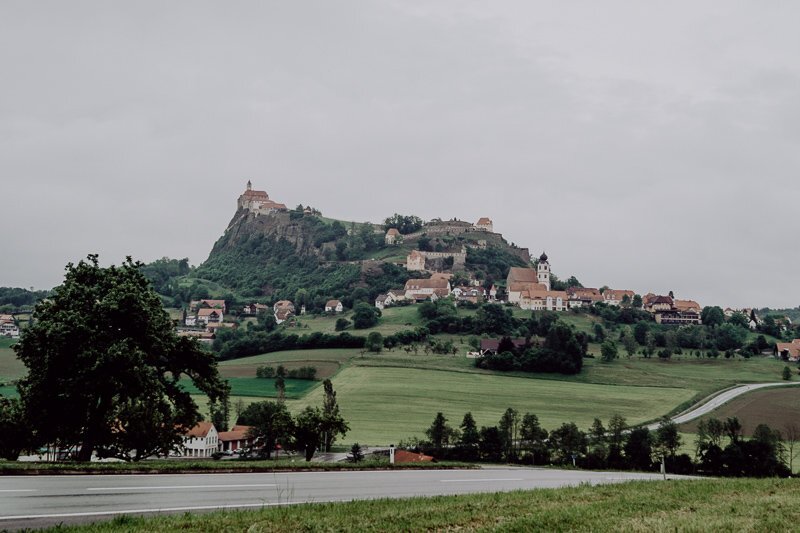Austria's emerging slow travel destination nestled in Styria
In the South-West corner of Styria, far away from the crowds of Hallstatt and the coach tours of Innsbruck, there is a small, community led travel and culinary regeneration happening. Thermen & Vulkanland Styria is a treat awaiting discovery.
To my mind, it's the ideal kind of slow travel destination.
Full of foodie lures, with locally made produce and farm to table philosophy, rolling vineyard landscape with strong cultural heritage and tradition, and the relaxation of natural springs and spas to help you disconnect at the end of the day.
How the hell had I not heard of this place sooner in my time travelling around Austria?
I was about to discover this was yet another instance where Austrian humility and Instagram-hype over more 'grammable locations have left a true gem ready for discovery.
Where is Thermen & Vulkanland?
Thermen Vulkanland, a region of Styria in southern Austria, is a relatively unknown region for English speakers - but this is a place you're going to want to get on your list to visit.
In May, as part of the #PropelGraz bloggers conference, I was invited to experience a short trip to this small region of Austria, a place I honestly knew very little about, apart from the famous Rogner Bad Blumau therme hotel. (More on that gem later!).
To give you some bearings, the region is about a 30 minute drive from Graz, making it about 2.5 hours from Vienna and is surrounded by stunning countryside. You can peep the map at the bottom of this article to see exactly where we adventured.
For our short trip, we were going to be given a taster of the local cuisine, things to do, and a chance to experience the thermal spas.
Before our trip, I was mostly excited about staying in the iconic Rogner Bad Blumau hotel. Designed by famed architect Friedensrich Hundertwasser, and created in line with his philosophies of embracing nature, it's long been on my 'Austria Bucket List' places to visit.
By the end of our short trip, I had lost my heart to Styria, and had my mum convinced to take a road trip with us next time she's in Austria!
This handy slow travellers guide will give you the run down of what to do and see in the region, but you really need to see the landscape for yourself to understand the utter tranquility of this special corner of Austria.
What to do in the Thermen & Vulkanland region of Styria
Slow Food Discovery in Styria
In our short time in Thermen & Vulkanland, we had but one key mission - eat all the delicious things.
Styria is famed for their cuisine, known colloquially as the 'green heart' of Austria where a huge percentage of fruit production is centred.
Now, in Thermen & Vulkanland, they are making the most of this with the slow emergence of premium, delicious cuisine, across a variety of products, restaurants and makers factories.
What does that mean for canny slow travellers? There is so much excellent good food to try.
We met multiple small-and-medium sized farmers, producers and local businesses who have committed to creating sustainable and delicious products.
These were just a few of the highlights, but you could easily make a long weekend road trip, by hopping between locations and exploring on a wine hike, cycling tour or just letting yourself explore up and down the hillsides.
Gölles Vinegar Factory
Never in my life did I think I would come away raving about a bloody vinegar factory, but honestly guys, this was spectacular and for someone who doesn't cook that often, a bit of an eye opener to the impact quality vinegars and balsamics can have on a huge variety of dishes.
First up, Gölles vinegar factory is all family owned and run since the 1950's.
We had a tour on a quiet Monday morning hosted by Michi, the nephew of the founder, Alois Gössl.
Michi was incredibly patient with our questions, tasting and inevitable posing-photo-taking and video making! (Bloggers gotta blog, right?).
On arrival you're met with stunning architecture, installations explaining the vinegar and schnapps making process and fully interactive museum and exhibits which give you some scope on the sheer volume of fruit required to create just one bottle of vinegar.
Real talk - I never understood the difference in quality and therefore price for fancy vinegars and balsamico vs regular store brought cheap stuff.
I get it now.
Michi explained to us that íf you want to create 1 litre of apple schnapps, it takes 14kg of apples! With smaller more rare fruits, you can multiply those ratios, so the mechanics of creating pure, fruit based, locally made vinegars and balsamics becomes clearer, and the rationale behind the price tags obvious.
There's a whole lot of time, effort, people and produce that goes into delicious balsamico, and we got to see and taste for ourselves how it works.
With your cheeky little tasting spoon, the taste quality and variety become equally obvious, as Michi talked us through how balsamico ages like a fine wine, gradually become thicker, richer, heavier - more like a delicious syrupy heaven than the €3 job from Spar.
We tried as many vinegar & balsamico varieties as possible, and truth be told, they had to drag Lavinia and I away from the store as we stocked up on balsamics, apple cider vinegar, a recipe book for adding vinegars to salads and more creative eating ideas.
(I was definitely trying to get girlfriend brownie points from Stefan by gifting him quality Gölles products, because I know cooking with superb ingredients is his weak spot... spoiler alert: it 100% worked and now we have a high-end vinegar & balsamico addiction in our household. )
You can easily spend a half day here, exploring the exhibitions, factory and then taste testing, plus they have a million-dollar view across to the Rigeresburg castle from the upstairs cafe, which is perfect for a lunch stop.
If you're feeling fancy, you could even book and stay at the nearby high-end hotel and wallow in the joys of vinegar and edelbrand schnapps (made from 100% fruit) for the duration of your holiday.
Okö Essbar Restaurant
The organic farm-to-table restaurant is located in the rolling pastures of the Zotter Chocolate Factory, serving up salads, tasting platters, traditional Austrian dishes, natural ice cream, and to round it out, a wine bar or beers to boot.
The Okö Essbar restaurant is uniquely linked to the Zotter Chocolate factory experience (philosophically and literally - you'll need the factory tour ticket to get to the restaurant!).
Nestled in the undulating hillside of the 85 hectares of farmland by the Zotter Chocolate Factory, the Okö Essbar is entirely self-sufficient, making pasta, salads, pizza and burgers for guests all from ingredients of their farm.
The quirky Joseph Zotter wants all guests to 'look their meal in the eye' before eating, and fully understand the connection between farm life and food, so to get to the restaurant you stroll amongst the farm animals enclosures beforehand.
They house a huge variety of animals - including kangaroos! - and seeing them beforehand gives visitors and kids a different context to choosing your dishes.
The food itself, is excellent.
We tried a variety of dishes, from the 'Jause' tasting plate of cheese and meats, to traditional beuschel (a kind of stew or soup made from the heart and lungs of veal) and a surprising selection of delicate dumplings and herb infused ramen.
The variety of options available on the menu was surprising - I was definitely not expecting ramen dishes at a farm-to-table restaurant in a chocolate factory in Austria! However, the care and attention to detail, combined with the all natural ingredients meant that every dish was enjoyably unexpected.
They also have an onsite craft beer options, home made ice creams and lots of kid-size snacks so the entire family can enjoy time here. The variety is fantastic and the depth of info you get, while staring across the farmlands where the ingredients are sourced from, is such a connected experience, I'd make repeat visits just to try different dishes!
Vulcano Ham Factory
Ok, let’s address the elephant (or rather, pig) in the room.
A ham factory tour is not for everyone. In fact, with the current push for people eating less meat to reduce their carbon impact and support sustainable farming, it might seem like the least appropriate thing for a slow traveller to do.
I came to the Vulcano Ham factory extremely sceptical, as I personally eat very little meat and am not a ham or pork lover at the best of times.
While my eating habits didn't change because of our visit, my perspective on pig farming and views on how to do it in a humane way have changed as a consequence of our visit.
We were fortunate enough to visit the Vulcano Ham factory on a day when one of the founders was in-house, and was generous enough to join us in conversation as we taste-tested the varieties of gourmet ham, delicately air dried and cured over extended periods in their custom made cellar.
I asked directly what her thoughts were on the current trend of people shifting away from eating meat - the response?
She agreed with me that it was a good change. Definitely not what I was expecting to hear from a business owner who makes a living selling meat!
We discussed that the current industrial mass production of meat for supermarkets, where packs of pork are sold for a few dollars, and how that means that the average consumers are completely disconnected from the effort, from the animal and from the true value of eating quality meat.
The goal and values of Vulcano ham are to create a high quality environment for their pigs, to live comfortably, happily and be treated humanely in the process prior to being slaughtered.
In short, their philosophy was very aligned with the ideas behind the slow food movement. Returning to traditional ways of rearing and caring for animals in order to make better quality meats and hams, because the pigs have lived a good life.
So even as a not-particularly-avid-meat eater, visiting the Vulcano Ham factory was an enlightening experience to hear the perspective from farmers who truly commit to a more sustainable, humane way of creating their produce.
We got to visit the open air enclosure where the pigs are cared for, saw their deep cellars where carefully cared for air dried ham was stored and see the visual history of the family farm that has now expanded into one of Austria's most successful brands.
In supermarkets across Austria you can now purchase Vulcano brand 'ham chips' - which may be the most Austrian snack of all time.
I enjoyed our visit for the opportunity to hear both sides of the argument when it comes to meat consumption, and learn more about the ways that conscious farming can offer an alternative to industrialised, poor quality meat production.
Oh, and they have that weirdly intriguing art exhibition inspired by legs of ham as you enter... so at the very least, you can see and experience some abstract exhibitions, and trial some produce in their store that's not meat related, as they partner with other local suppliers to pair with their stock.
Vulkanland Sekt Manufaktur
Ok, we all know by now that you can only call champagne, champagne, if it actually comes from the region in France, right?
Well....here in Vulkanland, they have their own unique sparkling wine that is lovingly sourced, tended to, turned, bottled and twisted regularly to create their very own variety of champ-er, Sekt.
In a teeny-tiny blink and you'll miss the stop cellar in this region of Styria, they are making their own sparkling, using the time honoured techniques and methods ordained by Dom Perignon 500 years ago.
This involves a detailed process of fermentation, bottling, letting the glass bottles sit and twisting them at specific times of day for a set length of time to ensure the optimal taste, fermentation and bubbliness.
I am definitely not explaining the level of detail and care required, because you really have to see it up close to believe and understand how specific making sparkling wine is.
Luckily, the lovely folk at Vulkanland Sekt Manufaktur have English team members and a lovely wee exhibition in their cellar to walk you through how to make the ideal sparkling wine.
Of course, you can taste test too.
This is another of those small businesses in the region, recently founded (2012) that leverages traditional farming, sustainable practices and local produce to create their Sekt.
The home-grown love and care is evident throughout their small store, cellar and the cosy cafe terrace - and they have puppies in store to boot.
Chatting away to the founder, while sipping their deeeeelightful Rose Sekt, and hearing the passion for production and drive to make a local product succeed, reminded me why travelling, why exploring local brands matters.
It's so that we can appreciate what's in our backyard, as much as 'established' Champagne brands.
In my rookie opinion? The Sekt here was definitely as smooth and drinkable as the established brands - at least in my limited experience with Dom Perignon haha (literally one glass, once maybe?).
Critically, I didn't get a banging headache like I normally would with regular cheapo supermarket sparkling. The group of us could have very, very easily continued taste testing.
My pro tip? If you are planning a slow travel weekend here, book yourself a champagne breakfast with these guys, you'll get to try the Sekt and all the delicious products listed above from Gölles, Vulcano ham and more of the regional suppliers, with a lovely view from the cafe terrace!
Slow Travel Experiences in Styria
Buschenschank
Technically this could also go under the foodie experiences, but to my mind, visiting a Buschenschank in Styria is definitely a cultural experience.
These small, normally family owned and run wine taverns are much like Vienna's heuriger's....but if a Styrian hears me say that I might be banned from visiting ever again!
In all seriousness though, Buschenschank's are delightful little rustic taverns that serve locally made wines and cold cuts of cheese, ham and produce from the farm or vineyards surrounding it.
They are always cosy, comfortable and very simple places, where friends and family come together to enjoy some drinks, snacks and the atmosphere.
Similarly to Heuriger, these Buschenschank came about in the 1700's after the decree of Emperor Joseph II, who allowed all owners of vineyards to open their doors and sell their freshly made wines and juices to guests.
Over time this came to include the selling of cold meats, home made spreads, cheese and other small snacky dishes to accompany wine drinking.
In this region of Austria, the wine taverns are known as Buschenschank because they hang a bushel of twigs - 'Buschen' - above the doorway to indicate when the wine tavern is open.
My favourite thing about these places are the details - everything in the little huts seems like something from a time machine, they are truly untouched with ceramic pots, small plants everywhere and lots of mildly terrifying dead animals on the walls.
To experience a Buschenshank like a local, it's very simple, all you need to do is take your time, enjoy a shared platter of cheese and meat (a 'Jausenplatter') and sip on the wine made fresh from the vineyards that unravel at your feet.
If wine isn't your thing, they also have fresh made juices from the grapes. Soaking up the atmosphere and relaxed way of connecting over food and drink is a truly cultural experience.
Alpaca Farm
Bet ya didn't see that one coming! Now I'm not going to claim that Alpaca's are native to Styria, but this charming little Alpaca farm in the region is on my must-visit list for next time we are in the area because.....you guys ALPACA'S ARE ADORABLE.
We didn't have time on our short trip, but we happened to meet the owner of the local alpaca farm while on our Zotter Factory tour and he spoke so passionately about his farm and the walks with Alpaca's that you can take in the countryside that looks over the rolling green hills of Styria that I now cannot shake the idea from my head.
To mix up activities between all the delicious wine tasting and food experiences, taking an Alpaca hike seems like the perfect antidote and adorable way to spend an afternoon in the outdoors.
Riegersburg Castle
A castle perched atop a dormant volcano, overlooking the countryside of Styria, what could be more alluring?
For a history nerd like me, visiting a castle said to have been impenetrable and founded in the early 1100's is an absolute must. With our limited time on my initial visit, we only got to peep the castle from the outside, as it overlooked the stunning Gölles factory and town of Riegersburg, but I am firmly committed to returning to this area and exploring the castle in full.
The castle itself has 3 exhibitions, showcasing the history of the region and why their fortress was one of the most impenetrable to continued attacks over the centuries. There is an armoury, a history exhibit and an exhibition on the witch trials of 1675.
Plenty of juicy history nerd material to sink into, and one of the main reasons I'm looking forward to returning to Rigersburg for a longer stay to explore the castle from the inside out.
Relax in the Therme Spas
There is a reason this part of Styria is known as 'Thermen & Vulkanland' - its because it is brimming with relaxing spas and natural hot springs.
I mean that literally - the whole region is built upon a line of ancient volcanoes, meaning there are hundreds of naturally forming hot springs in the area that the locals have taken full advantage of, building up a collection of 6 main therme spas areas.
They are made up of the villages, Bad Radkersberg, Bad Gleichenberg, Loipersdorf, Bad Blumau, Bad Waltersdorf and Sebersdorf.
What I find most interesting, and what makes this region so fresh and unique, is they actually didn't uncover these springs and build up infrastructure, hotels and tourism initiatives around them until recently.
In the 1970's, this part of Austria was relatively poor, as their economy was in decline from the end of the industrial period. While drilling for oil, a petrol company happened to hit upon a natural mineral spring, deep beneath the earth, uncovering a previously untapped resource of the region.
Though the Romans had enjoyed mineral hot springs in the region centuries ago, it wasn't until the Rogner Bad Blumau hotel and other major spa hotels were popularised in the 1980's & 90's that tourism became a viable opportunity for the area.
So this whole corner of Austria is still relatively 'undiscovered' in comparison to say, Vienna, Innsbruck or Salzburg, which are more often busy with a constant stream of tourists.
Here, in Thermen & Vulkanland Styria, you can find quiet, locally run and owned businesses and a region that is still defining its identity around the twin themes of high quality food and super relaxing spas and mineral baths.
The two therme resorts I've been lucky enough to experience were so incredibly relaxing, calm and surrounded by stunning nature and countryside, it is a definite guilty pleasure to visit.
Loipersdorf Resort
We actually visited here for a work retreat in mid-October, intended to help us de-stress after a mammoth year of success. The natural setting upon the hillside, looking over the gently changing-colour trees and countryside had the group of us on arrival inhaling the fresh air sharply, hands on hips, swivelling slowly to take in the views, scarcely believing we got to do this as a work trip.
The Loipersdorf resort is, in a word, ridiculous. There is a general water play area with waterslides, multiple pools, at least 3 restaurants, a cafe, an extensive bar, and outdoor exercise areas. That's before we even get to the therme spa bit.
Languidly sprawling over a huge swathe of land, Loipersdorf spa is so calm, peaceful and relaxing, before you step a toe into the 36 degree mineral baths you'll unwind naturally, just from the setting.
Even with a crowd of raucous colleagues, we enjoyed some chill out hours in the crisp glow of autumn sunshine, sitting in the pools and spas (don't worry - there are fully clothed areas of spas!) relaxing on the pool loungers and snacking on cake and coffee. It was totally blissful and a wonderful way to disconnect from the real world for a short break.
We only had an overnight trip here, and in that time managed to try out multiple mineral baths, sauna rooms and get lost in the sprawling hallways of the extensive resort hotel. The service was top notch and the food for every single meal was filling, hearty, high quality Styrian style. I had more pumpkin seed oil and delicious dumplings than my body could reasonably handle.
In short - Loipersdorf has everything you could want for a relaxing weekend away, and I'm hanging to get back there with Stefan to continue exploring its multiple sauna rooms and spa's that we didn't get to on the work trip!
Rogner Bad Blumau
This is a truly special spa resort, designed by Freidrich Hundertwasser and built to reflect the natural setting surrounding it. Full of delightful architectural surprises - undulating footpaths, bright poking towers and apartments built to be integrated in the hillsides.
Perhaps the most famous of the therme spa's in the region, Bad Blumau is renown for its innovative design, but what I wasn't expecting on my visit was just how huge and diverse their range of pools and spas would be.
There is such a huge expanse of pools indoor and outdoor, including the toasty warm volcano spring, little mini-rivers taking you from indoor to outdoor and there is even a freakin' wave pool for goodness sakes!
If you are staying in the region, you can actually pay to visit just the spa for a day which is well worth a visit in my opinion - the hotel room prices can be steep at certain times of the year, so accessing just the spa portion is a good affordable alternative.
They do prefer you to reserve in advance so they can manage the amount of people on a given day, which you can do so here.
Rogner Bad Blumau is a must-do when you are in this area of Styria. The architect's impact on Austrian culture, the hotels premier place in forging the developing tourism in the region and the natural, sustainable way the entire hotel and spa complex has been designed in harmony with nature make it an iconic place to visit.
These are just two of the many lush and relaxing spa's in the area, and you could easily make multiple weekend getaways to experience them all.
The combination of fresh countryside air, natural mineral springs that make relaxation simple and hearty delicious food made from local farmers and producers mean that Thermen & Vulkanland is just about perfect for a relaxing, connect-with-nature slow holiday.
I have a wish-list as long as my arm of things I want to do when we return to the region - from tackling the picturesque cycling paths, to exploring the romantic castle road, to simply escaping in winter to a toasty warm relaxing therme, surrounded by snowfall, there is a multitude of excuses to return to Styria.
Mostly though, with it being so close to the doorstep of Vienna, I really want to take advantage of more home grown travel destinations, and support a growing region that is still so genuine in their hospitality, and direct with their supply chain and local produce.
So you might not see these villages and places on mega-must-see lists online (yet!), but I think that makes them just a little more special to visit, don't you? Let me know in the comments if you'd be keen to visit Thermen & Vulkanland Styria!






